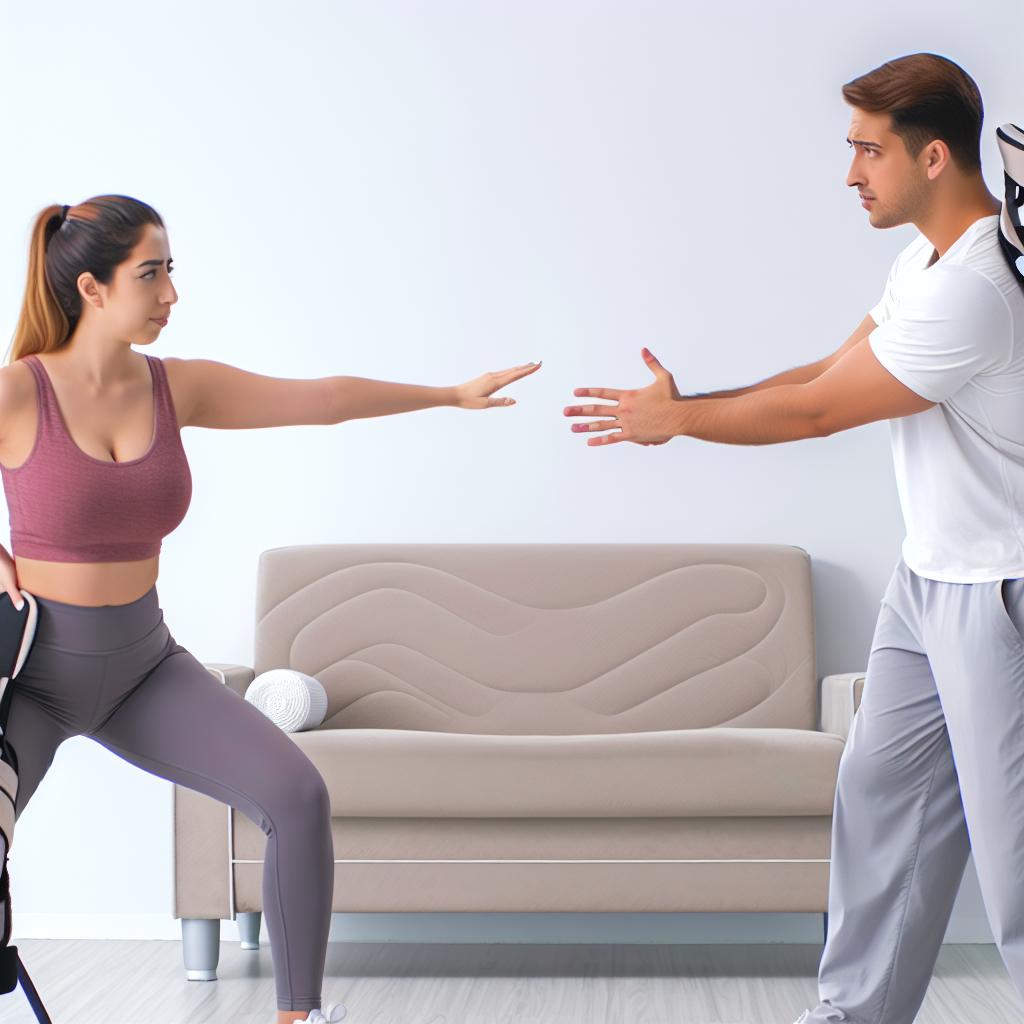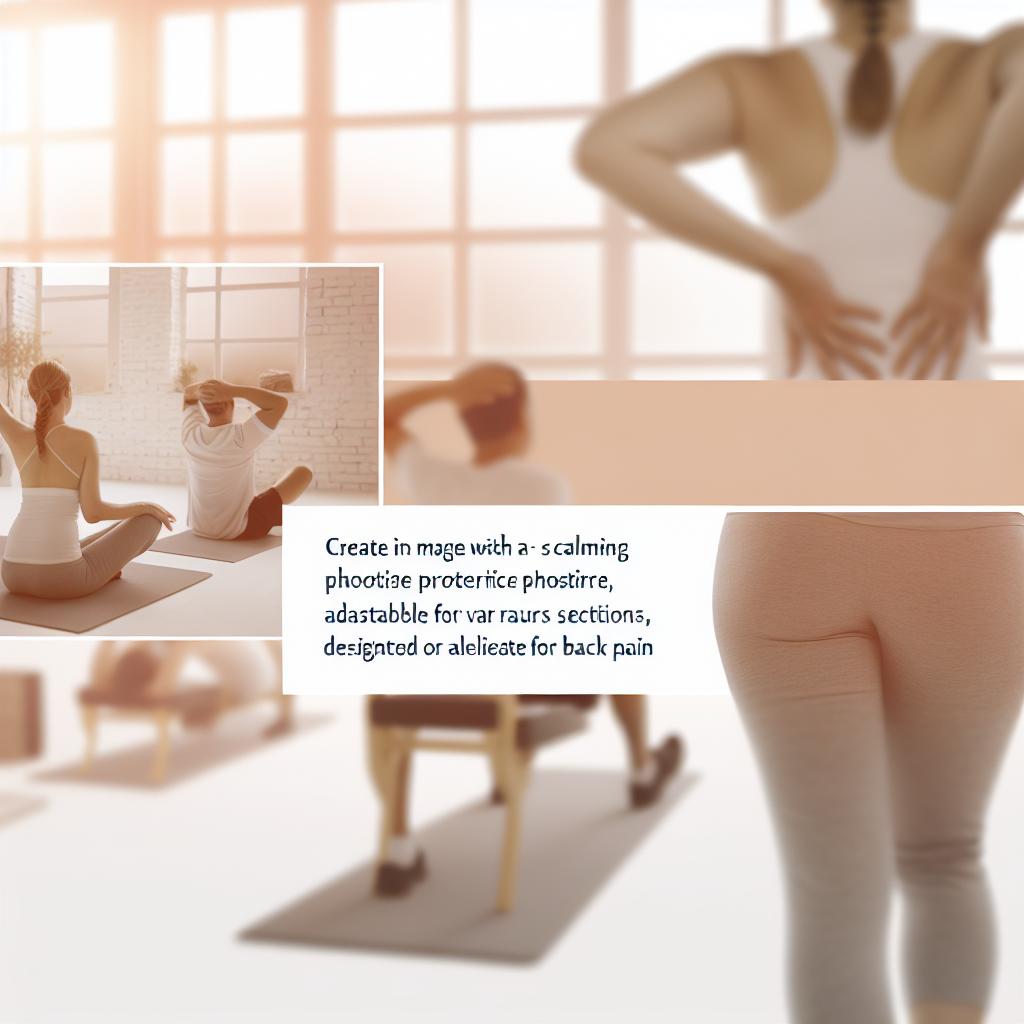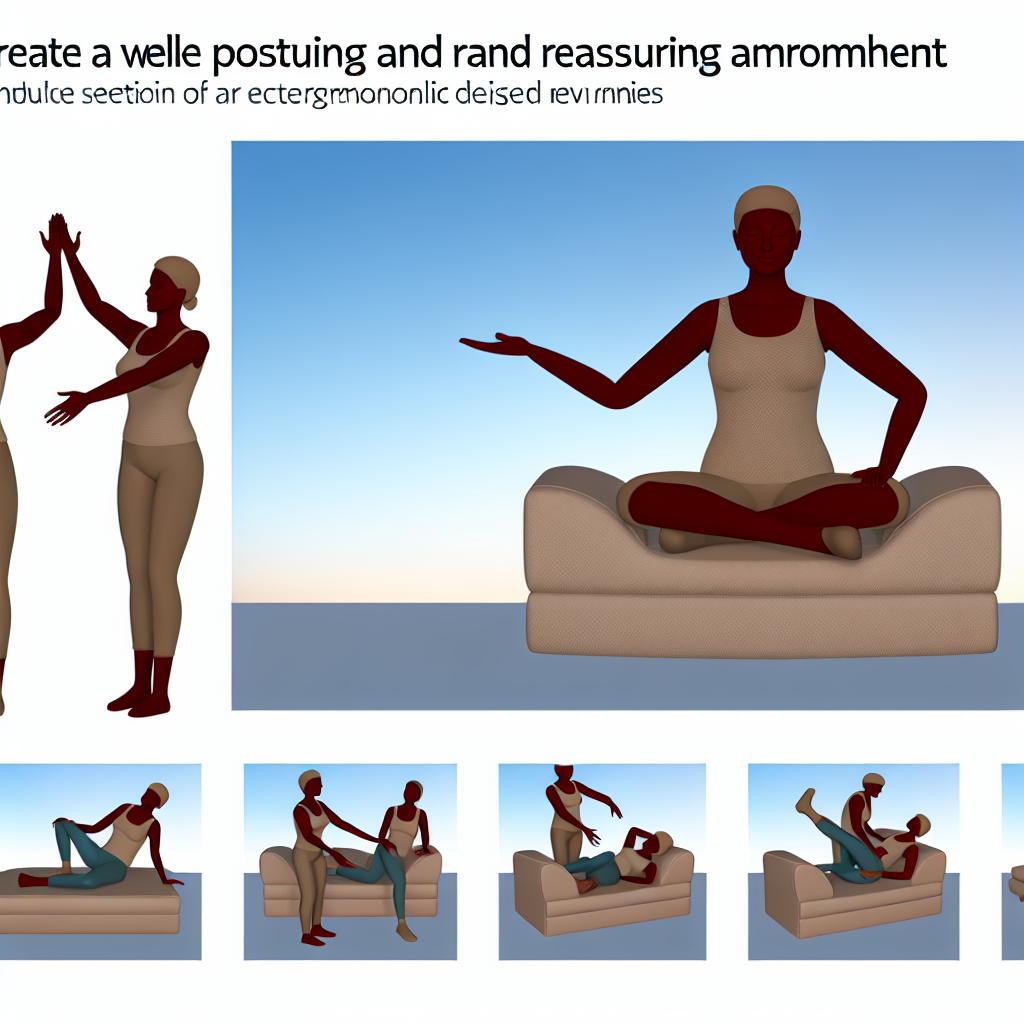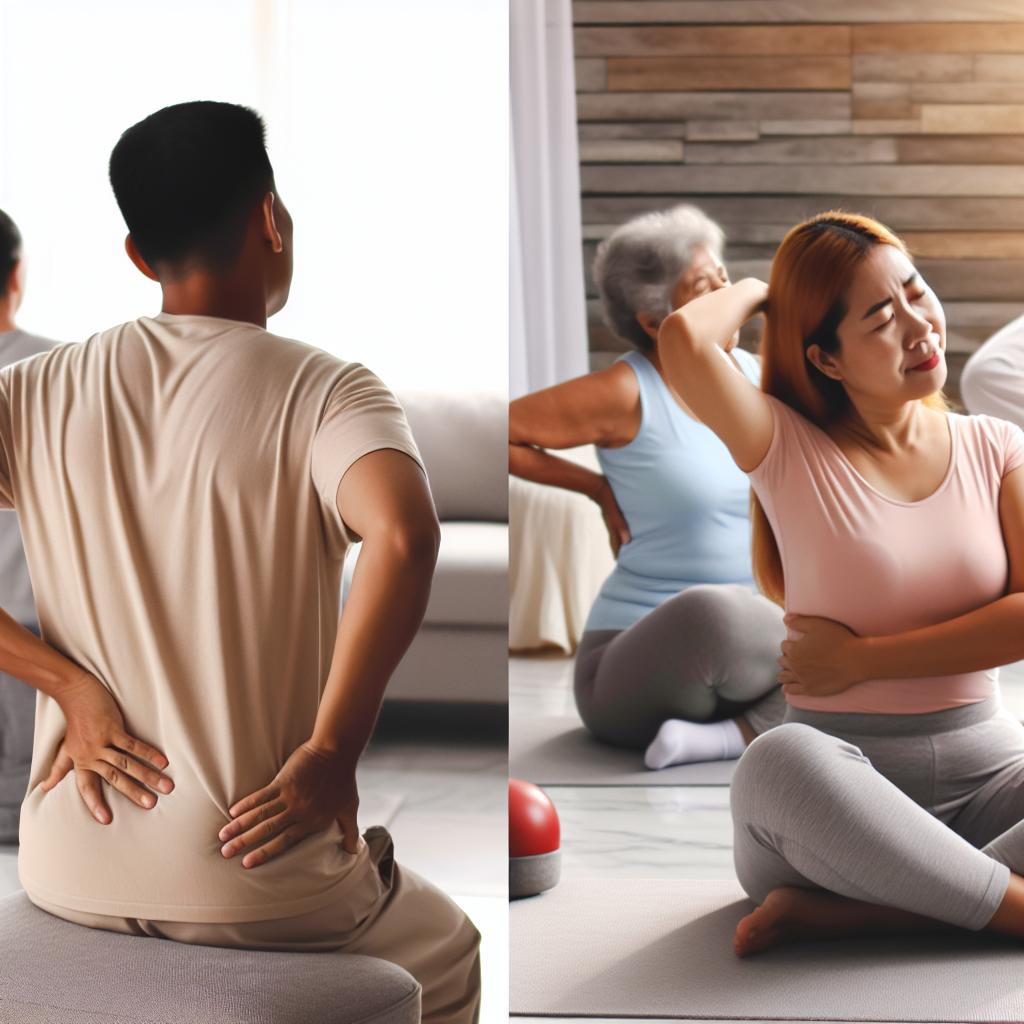Are you ready to take your adaptability game to the next level? Welcome to our guide on “How to Stretch the Back Leg for Splits Without Injury Risk.” If you’ve ever dreamed of effortlessly gliding into a split like a seasoned gymnast or a graceful ballerina,you’re in the right place—but let’s face it,we don’t want to do that while serenading an accidental visit to the ER! In this article,we’ll dive into safe and effective stretches that will pamper your back leg while keeping injury at bay. So, buckle up, grab your yoga mat, and let’s transform from “not today, splits!” to “look at me, I’m practically a pretzel!” with professional tips and plenty of humor along the way. Your body (and your future self) will thank you!
## Understanding the Importance of Stretching the Back Leg for Splits Without Injury Risk
The Significance of Stretching the Back Leg
Stretching the back leg is crucial for achieving splits while minimizing the risk of injury. The back leg often bears much of the load during performance,especially in forward splits. If not adequately prepared, it can lead to strain on the hamstring and hip flexors. Proper stretching increases flexibility, enhances range of motion, and prepares the muscles for the demands of the split.
Key Stretching Techniques
Incorporate a variety of stretches to target the back leg effectively:
- Lunge Stretch: Start in a lunge position with your front knee over your ankle and your back knee resting on the floor. This stretches the hip flexors and prepares the back leg for deeper movements.
- Hamstring Stretch: Sit on the ground with one leg extended and the other bent. Reach towards the extended leg to stretch the hamstring of the back leg.
- Pigeon Pose: This pose opens the hips and alleviates tension in the glutes and thighs, benefiting the back leg’s flexibility.
Tips for Safe Stretching
To stretch safely and effectively,follow these guidelines:
- Warm Up First: Always perform a short warm-up to increase blood flow to your muscles.
- Listen to Your Body: Pay attention to any signs of discomfort. Stop immediately if you feel any sharp pain.
- Consistency is Key: Stretch regularly to slowly increase your flexibility and strength.
enjoy Progress with Gradual Training
As you work towards achieving the splits, remember that flexibility develops over time. By focusing on the proper stretches for your back leg, you’ll build strength and resilience that promote both flexibility and safety, substantially reducing the risk of injury while practicing your splits.
## Exploring the Benefits of Proper Stretching Techniques
Understanding the Importance of Proper Stretching
Proper stretching techniques not only enhance flexibility but also promote muscle strength and prevent injuries. When aiming to achieve splits, especially in the back leg, it’s crucial to implement safe stretching practices. This will facilitate muscle elongation while minimizing the risk of strain.
Effective Techniques for Stretching the Back Leg
Dynamic Warm-Up
Before starting your stretching routine, performing a dynamic warm-up is essential. This can help increase blood flow and prepare your muscles for deeper stretches. Consider these effective exercises:
- Leg swings: Front to back and side to side
- Walking lunges: Stretch while moving
- High knees: Elevate your heart rate
Specific Stretches for the Back Leg
Focus on these targeted stretches to safely work towards achieving the splits:
- Hamstring stretch: Sit on the ground with one leg extended and reach towards your toes while keeping the opposite leg bent.
- Hip flexor stretch: Kneel on the ground with one knee down and lunge forward to stretch the hip flexor of the back leg.
- Side lunges: Step sideways into a lunge while keeping the opposite leg straight, stretching out the inner thigh and groin area.
Tips for Avoiding Injury
To prevent injury while stretching:
- Warm up thoroughly using dynamic movements.
- Avoid bouncing while stretching; hold each position steadily.
- Listen to your body: only stretch to the point of mild discomfort, not pain.
Building a Consistent Routine
Incorporate stretching into your daily routine for best results. Stretching 2-3 times per week can significantly advance your flexibility and reduce the risk of injuries. Combine it with other exercises like skipping rope for overall fitness and improved muscle tone without compromising flexibility goals [[3](https://www.quora.com/Is-doing-the-splits-2-3-times-for-30-seconds-per-day-enough-stretching)].
## Common Mistakes When Stretching the Back Leg and How to Avoid Them
Incorrect Hip Positioning
One of the most common mistakes when stretching the back leg is poor hip positioning. Ensure that your hips are aligned properly to enhance flexibility and prevent injuries. When in a lunge position, your hips should face forward rather than being skewed to one side. This alignment helps to keep the pelvis stack evenly, allowing for deeper stretches without strain.
How to Correct hip Alignment
- begin in a lunge position with your front knee directly above your ankle.
- Keep your back leg straight and actively press your heel into the ground.
- Engage your core to stabilize your pelvis and avoid tilting.
Insufficient Warm-up
Another critical error is failing to adequately warm up the muscles before stretching. Warm muscles are more pliable and less prone to injury. Incorporate dynamic stretches or light cardio before advancing to deeper stretches for the back leg.
Warm-up Suggestions
Consider the following warm-up activities:
- Jogging: A light jog for 5-10 minutes to increase overall body temperature.
- Leg Swings: Swing your legs forward and backward or side to side to loosen hip joints.
- Dynamic Lunges: Perform shallow lunges with a focus on controlled movements to activate muscles.
Ignoring Body Signals
Pushing through pain is a prevalent mistake that can lead to serious injuries.It’s crucial to listen to your body and recognize the difference between discomfort from stretching and pain that indicates something is wrong. Always stop and reassess your technique if you feel sharp or lasting pain.
Tips for Listening to your Body
- Keep a journal to track your flexibility progress and note any discomfort.
- Use a pain scale to assess your level of discomfort; aim for a manageable stretch without pain.
- Consult a professional if you experience persistent issues, as they can provide personalized guidance.
## Recommended Warm-Up Exercises to Prepare for Stretching the Back leg
dynamic Warm-Up Movements
Engaging in dynamically focused warm-up movements is crucial before attempting to stretch the back leg for splits. These movements help prepare the muscles and increase blood flow, reducing the risk of injury. Consider incorporating the following exercises:
- Leg Swings: Stand next to a wall for balance. Swing your back leg forward and backward for 10-15 repetitions. This movement promotes flexibility in your hamstrings and hip flexors.
- Lunges with a Twist: Step into a lunge position, keeping your front knee aligned with your ankle. Twist your torso towards your front leg and hold for a few seconds. Repeat on both sides.
- Side lunges: Step out to the side in a wide stance, bending one knee while keeping the other leg straight. This stretch opens up the inner thigh and prepares you for deeper stretches.
Gentle Stretching Techniques
Once you have warmed up your muscles,proceed with gentle stretching techniques tailored for the back leg:
- Standing Hammock Stretch: Stand on one leg and bring the opposite knee towards your chest. Hold your foot and gently pull, keeping the standing leg straight. Hold for 20-30 seconds and switch sides.
- Quad Stretch: Stand on one leg and grasp the ankle of your other leg, pulling it towards your glutes. Keep your knees together and push your hips forward slightly for a deeper stretch.
- Pigeon Pose: From a tabletop position,bring your right knee forward and place it behind your right wrist,extending your left leg behind you. This pose deeply stretches the hip and glute area. Hold for 30 seconds,then switch sides.
Cool Down and Relaxation
After your stretching session, it’s vital to cool down to let your muscles relax and recover:
- child’s Pose: Kneel on the mat, sit back on your heels, and stretch your arms forward on the floor. This position gently stretches the back and hips.
- Forward bend: Stand upright, then slowly bend at the hips, letting your upper body hang. This helps relax the spine and hamstrings after intense stretching.
## Effective Stretches for Safely stretching the back Leg for Splits
essential Techniques for Stretching the Back Leg
To safely stretch the back leg for splits, it’s crucial to incorporate a variety of techniques that facilitate gradual flexibility without risking injury. One recommended method is to perform static stretches that focus on the hamstrings and hip flexors. This can be achieved by:
- Standing Hamstring Stretch: While standing, place one foot on an elevated surface (like a low table). Gently lean forward while keeping your back straight, allowing your body weight to stretch the back leg.
- Sitting Forward Bend: Sit with your legs extended in front of you. Reach forward toward your toes, aiming to keep your spine lengthened. hold this position for 20-30 seconds.
- Pigeon Pose: From a tabletop position, bring one leg forward and bend it at the knee while extending the other leg straight back. This stretch targets the hips and can effectively release tension in the back leg.
Incorporating Dynamic Warm-Ups
Before engaging in static stretching, it’s essential to warm up your muscles dynamically. Consider the following exercises:
- leg Swings: Stand next to a wall for support. Swing one leg forward and backward in a controlled manner to increase blood flow and prepare the leg muscles.
- High Knees: March in place while lifting your knees as high as possible to engage the hip flexors and hamstrings.
Safety Tips for Effective stretching
When stretching for splits, it is vital to listen to your body and avoid pushing beyond your limits. Maintain a few key practices:
- Warm-Up: Always ensure your muscles are warmed up properly before stretching.
- Breath Control: Incorporate deep breathing into your stretches to enhance relaxation and facilitate deeper stretches.
- Consistent Practice: Stretch regularly, aiming for 2-3 times a week, while holding each stretch for at least 30 seconds to improve flexibility over time.
## Incorporating Strengthening Exercises to Support Back Leg Flexibility
Understanding the Importance of Strengthening Exercises
To achieve optimal flexibility for your back leg during the splits, it’s essential to focus on strengthening the muscles that support this movement. By enhancing the strength of your glutes and hamstrings, you provide stability and support, reducing the risk of injury. Strengthening exercises should be a vital component of your routine, as they prepare your body to handle increased flexibility.
Key Strengthening Exercises
- Hip Bridges: Lie on your back with knees bent and feet flat. Lift your hips towards the ceiling while squeezing your glutes. Lower and repeat.
- Squats: Stand with your feet shoulder-width apart. Lower your body as if sitting on a chair, keeping your back straight.Return to the starting position.
- leg Lifts: Stand on one leg and slowly extend the other leg backward while keeping it straight. Hold for a few seconds and switch legs.
Incorporating Stretching with Strengthening
Alongside strengthening exercises, integrating specific stretches can enhance your back leg flexibility. incorporate these stretches after your strengthening workouts to maximize benefits, ensuring your muscles are warm and ready for elongation.
Recommended Stretching Routine
- Hamstring Stretch: Sit with one leg extended and the other bent. Reach toward your toes of the extended leg while keeping your back straight.
- seated Forward Fold: Sit with legs straight and hinge at your hips, reaching forward toward your feet while keeping your spine elongated.
- Quadriceps Stretch: Stand up and pull your heel towards your glutes, feeling a stretch along the front of your thigh.
## Listening to Your Body: Signs of Overstretching and Injury Prevention
Understanding Signs of Overstretching
When working towards achieving splits, it is crucial to listen to your body to prevent injuries. Signs of overstretching can include:
- pain: Any sharp or severe discomfort during stretching is a clear signal to stop.
- Muscle Spasms: These can indicate that your muscles are fatigued and need rest.
- Stiffness: Feeling excessively stiff after stretching may mean you overstretched.
- swelling: Any swelling should be assessed by a professional.
Recognizing these signs early can help you adjust your routine and avoid serious injuries.
effective Stretching Techniques for the back Leg
Safe Stretching Steps
Here are actionable steps for stretching your back leg effectively without risking injury:
- Start with a gentle warm-up, such as light jogging or jumping jacks, to increase blood flow to your muscles.
- Get into a lunge position with your front leg bent and your back leg straight, ensuring your hips are square.
- Gently lower your hips towards the ground,feeling a stretch in the back leg’s hip flexor without forcing the movement.
- Hold this position for 20-30 seconds, focusing on breathing steadily.
- Repeat the stretch 2-3 times, increasing duration or intensity only when pleasant.
Adding Resistance
To further prepare your back leg for splits, incorporate resistance stretching:
- While in a lunge, gently pull the back foot towards your glutes using a strap or towel.
- Hold the resistance for 10-15 seconds and release slowly.
- this technique enhances flexibility while safeguarding against overstretching.
Injury Prevention Tips
Incorporate these injury prevention strategies into your stretching routine:
- Stay Hydrated: Dehydration can lead to muscle cramps and increased injury risk.
- be Consistent: Regular practice helps increase flexibility safely over time.
- Focus on Form: Ensure proper alignment and positioning during every stretch.
By listening to your body and employing these techniques, you can safely work towards your splits while minimizing injury risks.
## Addressing Potential Challenges when Stretching the Back Leg for Splits
Understanding the Importance of Flexibility
When stretching the back leg for splits, it’s crucial to focus on improving hamstring and hip flexor flexibility. These muscle groups play a vital role in achieving a safe and effective split position. As you incorporate stretching into your routine, keep the following considerations in mind:
- **Warm Up**: Always begin with a dynamic warm-up to increase blood flow and prepare your muscles.
- **Listen to Your body**: Pay attention to any discomfort or pain during stretches, as this can indicate overstretching or strain.
- **Avoid Bouncing**: Static stretching should be smooth and controlled; bouncing can lead to injury.
Step-by-Step Stretching Routine
Implementing a structured stretching routine can greatly enhance your flexibility while minimizing injury risk. Follow these steps to effectively stretch your back leg:
1. Standing Hip Flexor Stretch
- Begin in a standing position and step one foot back into a lunge.
- Lower your hips forward while keeping your back leg straight to feel a stretch in the hip flexor.
- hold for 20-30 seconds, maintaining a neutral spine.
2. Seated Hamstring Stretch
- Sit on the floor with one leg extended straight and the other leg bent inward.
- Reach forward toward your toes, feeling a stretch in your hamstring.
- Hold for 20-30 seconds, ensuring that your back stays straight.
3. pigeon Pose
- Start on your hands and knees; bring one knee forward, placing it behind your wrist.
- Extend your opposite leg straight back and lower your hips to feel a stretch in the hip.
- Hold for 20-30 seconds, switching sides afterward.
Incorporating Strengthening Exercises
In addition to flexibility training,strengthening your muscles is essential for overall stability and injury prevention. Consider adding the following exercises to your routine:
- **Leg Curls**: Strengthen hamstrings gradually with light weights.
- **Hip Bridges**: Target glutes and hamstrings to support hip flexibility.
- **Squats**: Engage the entire lower body, promoting strength and stability in your base.
## Cool Down: The Role of Recovery in Injury Prevention
The Importance of Cool Down and Recovery
Integrating a proper cool down into your stretching routine is crucial for minimizing the risk of injury,especially when targeting deeper stretches like splits. Effective recovery allows your muscles to gradually transition from high intensity to a relaxed state, improving overall flexibility and muscle health.
Benefits of Cooling Down
- Reduces muscle Soreness: Gradually decreasing activity helps in the removal of lactic acid, which can contribute to soreness.
- Enhances Flexibility: Cooling down keeps your muscles warm and more pliable, aiding in better stretching outcomes.
- Prevents Injury: Allowing your body to recover minimizes the risk of strains and overexertion.
Cool Down Techniques for Back Leg Stretch
To safely stretch your back leg during splits without risking injury, follow these steps:
Step-by-Step Stretching Guide
- Start with Gentle Movements: Begin with easy hip openers like butterfly stretches and leg swings.
- progress to static Stretching: After warming up, move into deeper stretches:
- Hamstring Stretch: Sit with one leg extended and reach towards your toes.
- Quadriceps Stretch: Stand and pull your back foot towards your glutes.
- Incorporate PNF Stretching: For added flexibility, use contract-relax techniques by gently resisting against a partner or a wall.
- Hold Every Stretch: Maintain each stretch for 15-30 seconds to ensure adequate muscle relaxation.
Always listen to your body—if you feel pain, stop the stretch immediately. Cool down and recovery are essential not only for achieving splits but also for preventing injuries and enhancing overall performance.
## Key Takeaways and Encouragement for Your Stretching Journey
Key Takeaways for Safe Stretching
When working on achieving your splits, stretching the back leg is crucial for flexibility and overall comfort. Here are some essential tips to guide your stretching routine:
- Warm-Up First: Always begin with a brief warm-up to increase blood flow to your muscles.This can include light cardio or dynamic stretches.
- Focus on Alignment: Ensure that your hips are squared and your back leg is extended straight behind you to avoid strain.
- Gradual Progression: Advanced flexibility takes time. Incorporate gentle, slow stretches and avoid pushing yourself beyond your limits.
Recommended Stretches for the Back Leg
Including specific stretches aimed at the back leg can enhance your flexibility and support your journey to the splits:
| Stretch | Description |
|---|---|
| Runner’s Lunge | From a standing position, step one leg forward into a lunge, lowering your back knee to the floor while keeping your front knee over your ankle. |
| Pigeon Pose | From all fours, bring one knee forward and to the side, extending your back leg straight behind you. This stretch opens the hips and targets the back leg. |
| Quadriceps Stretch | Stand on one leg, pull your back foot toward your glutes, keeping your knees together to stretch the front of your thigh. |
Encouragement for Your Stretching Journey
Remember, flexibility training is a journey, not a race. Celebrate your progress and listen to your body as you go. If you experience discomfort, take a step back and modify your stretches. Consistency is key, and even small improvements in your mobility will add up over time.
Stay motivated by setting realistic goals and practicing regularly. Connecting with a community, whether online or in-person, can provide support and accountability. Embrace each stretch as a step closer to your goal, and enjoy the process of becoming more flexible!
Frequently Asked Questions
### What are the best stretches for the back leg to achieve splits?
To effectively stretch the back leg for splits, consider incorporating these key stretches into your routine:
- **Lunge Stretch**: Start in a lunge position with your front knee bent at a 90-degree angle and your back leg extended behind you. lower your hips toward the ground while keeping your back leg straight. Hold this position for 20-30 seconds before switching sides. This stretch targets your hip flexors, quads, and hamstrings, which are crucial for achieving flexibility in the splits.
– **Runner’s Stretch**: From the lunge position, place your front foot flat and shift your weight back towards your back leg, allowing your front leg to stretch. Keep your back leg straight and feel the stretch in your hamstring and calf. Hold for 20-30 seconds.
– **Pigeon Pose**: This yoga pose not only stretches the back leg but also opens up the hips. From a plank position, bring your right knee forward and place it behind your right wrist, extending your left leg straight back. Keep your torso upright or fold forward for a deeper stretch. Hold for 20-30 seconds and switch sides.
Incorporating these stretches into your regimen will help you target the necessary muscle groups and gradually improve flexibility in your back leg.
### How often should I stretch to improve flexibility for splits?
To improve flexibility effectively, consistency and frequency are key. Aim to stretch at least **3-5 times per week**. Here’s a structured approach to follow:
– **Daily Routine**: Incorporate a warm-up before your stretching session. Light aerobic exercises such as jogging in place or jumping jacks help increase blood flow to the muscles.
– **Stretching Sessions**: Dedicate **20-30 minutes** for targeted stretching. Focus not just on the back leg but also on the hip flexors,hamstrings,and calves. Doing this regularly helps your body adapt and increases flexibility over time.
– **Rest and recovery**: Allow yourself adequate rest. Stretching every day is beneficial, but ensure you listen to your body. If you feel any pain or discomfort, take a break or modify your routine to avoid injury.
Remember, gradual progress is essential, and pushing yourself too hard can lead to setbacks.
### What precautions should I take to avoid injury while stretching?
Taking precautions is vital to prevent injuries while stretching. Here are some essential tips:
– **Warm Up**: Always start with a five to ten-minute warm-up. Engaging in light cardio increases blood circulation and prepares your muscles for deeper stretches. Skipping this step can increase the risk of strains.
- **listen to Your Body**: Stretch only until you feel a gentle pull, not pain. Understand the difference between discomfort and pain.If you experience sharp or severe pain, ease off the stretch immediately.
– **Use Proper Form**: Ensure you are performing stretches with correct alignment. Engaging in stretches incorrectly can lead to muscle strains or ligament injuries. Consider consulting a trainer or watching instructional videos if unsure.
– **Cool Down**: After your workout and stretching, take time to cool down with gentle stretches. This helps prevent stiffness and promotes recovery.
Taking these precautions can significantly reduce the risk of injury, allowing you to stretch safely and effectively.
### Can I use props to assist with my stretches for the back leg?
Yes, using props can be highly beneficial for enhancing your back leg stretches.Here’s how various tools can assist you:
– **Yoga Blocks**: These are great for maintaining proper alignment and supporting your body during stretches. Such as, in a lunge position, placing a block under your front hand can help you deepen the stretch without straining.
– **Straps or resistance Bands**: These can assist in improving your reach and holding stretches longer. For hamstring stretches, placing a strap around your foot while lying on your back allows you to gently pull your leg towards you, enhancing flexibility without overstressing your muscles.
- **Wall Support**: Using a wall can provide stability during stretches like the standing quadricep stretch or hip flexor stretches.This support enables you to focus on the stretch without worrying about balance.
Incorporating props into your routine can provide additional support, comfort, and motivation, especially if you’re just starting your flexibility journey.
### How long should I hold each stretch for optimal results?
Holding each stretch for an adequate duration is crucial for improving flexibility.Here’s a general guideline to follow:
– **Hold for 20-30 Seconds**: For most stretches, holding them for about **20 to 30 seconds** is effective. This duration allows muscles to relax and lengthen adequately.
– **Repeat**: Aim for **2-4 repetitions** of each stretch during a session. After the initial hold, gently release and then re-enter the stretch to maximize the benefits.
– **Extended Holds**: for deeper stretches, consider holding them for **60 seconds**. This is particularly effective after you’ve achieved some flexibility and are looking to deepen your stretch gradually.
Remember to take deep breaths throughout your stretches, as this helps to relax the muscles and increase your range of motion over time.
### What are some common mistakes to avoid when stretching the back leg?
Avoiding common stretching mistakes is vital to effectively improve your flexibility without injury. Here are a few to watch out for:
– **Bouncing While Stretching**: This can cause micro-tears in your muscles. Always avoid dynamic or bouncing movements while in a stretch as it can lead to injury. Rather, opt for static stretches, where you hold the position.
– **Neglecting Balance**: Ensure you stretch both sides equally. Manny individuals focus primarily on their dominant side, which can create muscle imbalances. Include stretches for both legs to promote balanced flexibility.
– **Skipping Warm-Up or Cool Down**: Failing to properly warm-up before stretching or cool down afterward can lead to stiffness and injury.Always incorporate these phases to prepare your body for activity and facilitate recovery.
Being mindful of these potential pitfalls will enhance your stretching routine, contributing to safer and more effective flexibility training.
In Summary
## Conclusion: Safe Stretching for Splits Success
You’ve taken a great step towards achieving your splits with proper stretching techniques for your back leg! Remember, safety is paramount in your flexibility journey. Here’s a quick recap of the key points to ensure an effective and injury-free practice:
### Key Takeaways:
– **Warm Up First**: Always begin with a warm-up to prepare your muscles and prevent injuries.
– **Use Proper Form**: Maintain correct alignment during stretches to target the right muscles and avoid stress on your joints.
– **Listen to Your Body**: Pay attention to how your body feels. Stretching should involve a mild stretch sensation, not pain.
– **incorporate Various stretches**: Engage in a variety of stretches, including lunges and kneeling stretches, to effectively target different muscles.
### Action Steps:
– **Practice Regularly**: Consistency is key! Incorporate these techniques into your regular routine for best results.
– **Stay Patient**: Progress may take time, so be patient and celebrate small victories along the way.- **Seek Guidance if Needed**: If you’re unsure about your form or need additional tips, consider consulting a coach or instructor.
Now that you’re equipped with these safe stretching methods, continue to practice with confidence and enjoy the journey towards your splits. You’ve got this!












